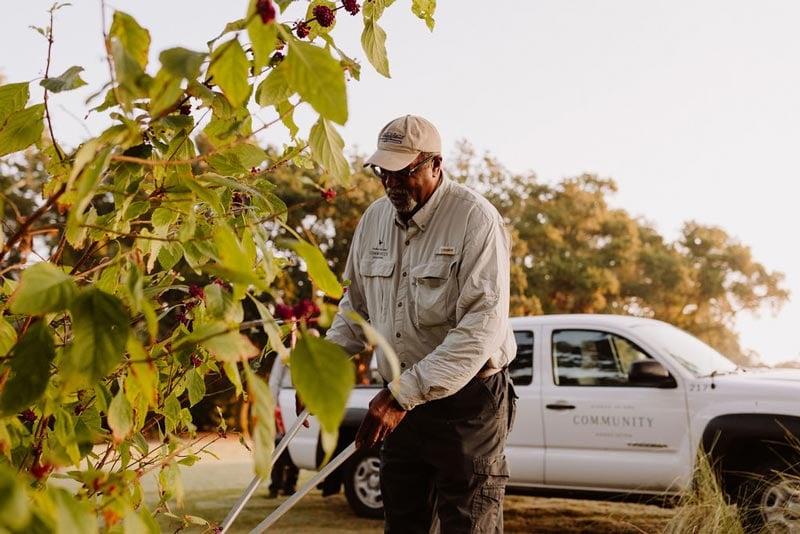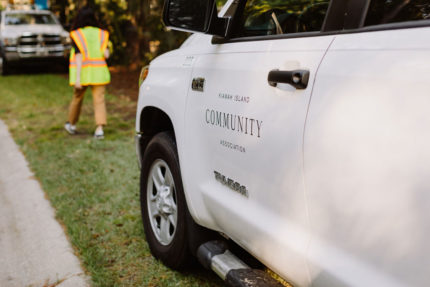Dec
28
2012
From The Blog
Board and Task Force Chairs Discuss Amenities Report
A year and a half ago the KICA Board of Directors established an Amenities and Services Task Force (ASTF) as part of its strategic plan. ASTF Chair Jim Williams, also a former director, board treasurer and strategic planning chair, presented the comprehensive final task force report to the board at its October workshop. Digest talked with Jim and Board Chair Craig Weaver about this substantial report.
Digest: Craig, why did the board establish this task force?
Craig Weaver (CW): KICA’s amenities have been discussed a number of times in recent years. Members have been surveyed and four years ago members considered an amenity-related land purchase. However, none of these actions resulted in a clear strategy or consensus. We have considered our amenities in a piece-meal manner but not provided members with a longer-term, comprehensive plan. One of the board’s most important responsibilities is to help assure that Kiawah remains a desirable community with stable or growing property values. That requires the community association to maintain and invest in its properties and the community as a whole. Amenities are one of the most significant investments that any community association makes, and we need to be certain we are making the right decisions and choices.
Digest: Jim, this was a considerable undertaking. How did you break it down and organize for research?
Jim Williams (JW): To include a variety of perspectives, 12 task force members who represented a cross section of association members were gathered, including full/part-time residents, front gate/second gate homes, single-family/regime owners, and Kiawah Island Club members/Governors Club members/non club members. It was a thoughtful group with a broad range of backgrounds and interests, and the group agreed to abandon any preconceived agendas. We then organized subcommittees to gather the data used to develop our conclusions. The subcommittees identified the types of amenities and services one would expect to find in a high-end community; determined whether these were already available on Kiawah; gathered data from more than a dozen high-end resort communities around the nation to learn how Kiawah compares; and examined Kiawah’s financial condition and population demographics.
Digest: What is the scope of the task force’s final report?
JW: The report presents 15 months of work in a 35 page analysis plus supporting documents. It describes Kiawah’s present recreational offerings, compares these to 14 similar communities, analyzes funding options for enhancing amenities and describes a process by which KICA can proceed if the board so chooses.
Digest: Tell us about your findings.
JW: Frankly, it was a wake-up call. Many of us were surprised by what we found. The island’s leadership – KICA, the Town of Kiawah Island, Kiawah Island Golf Resort and Kiawah Partners – have collectively worked hard and were successful in making Kiawah the premiere coastal resort/residential community on the east coast. It’s a wonderful place to live, to visit, to invest in. However, we learned that similar high-end communities view their amenities as necessary to satisfy the changing desires and expectations of their property owners. To fulfill the expectations of current and future property owners, they are making major investments in their amenities. Our report details what we believe is necessary to preserve the property values for each property owner on the island and maintain Kiawah’s status as the first class community we always have been.
Digest: How specific are the recommendations in the report?
JW: The study is not a blueprint of “must-have” new amenities, specific sources of funding, or conclusions about the need for additional land for enhanced amenities. It provides insight on these subjects, describes a process forward, and points to the importance of using an outside expert to assist in fleshing out the specifics.
Digest: Craig, why is it important for Kiawah to keep up in terms of amenities?
CW: There are two ways in which amenities are important to members. First, they contribute to each member’s personal enjoyment of the community. KICA provides meeting and social facilities for groups and events, recreation, fitness, nature and leisure facilities, and educational opportunities. Each of these contributes to the desirability of living on Kiawah. Determining what specific amenities to provide is difficult because our members have diverse interests and expectations. Some also have additional amenities available to them through the Kiawah Island Club and the resort. More recently, we see signs that newer members have different and higher expectations for both the quality and breadth of amenities as well.
The second way amenities are important I have already mentioned – in the aggregate the quality of our amenities impacts all of our property values. Regardless of whether any member individually desires or uses a particular amenity, the collective value of our properties may rise or fall depending upon how future buyers evaluate our amenities and facilities against other communities, especially if they see them as outdated.
Digest: Jim, What were some of the specific areas where the task force thought Kiawah needs to improve? What are our strengths and weaknesses?
JW: The study measured Kiawah’s amenities against what potential property purchasers can find in other high-end communities. Our beach, our natural beauty, and our leisure trail system are superb, but our wellness, fitness and pool facilities, and our meeting spaces are inadequate and dated. For example, the Sandcastle was built in 1996 to be a dining area, fitness room, and social gathering place. The meeting rooms are now inadequate to support the number and variety of community groups and events we have. We learned that people today want multi-generational and family-oriented activities, and educational and cultural offerings. The master plan should contemplate the needs of a variety of different constituencies.
Most of the community associations we studied have already concluded that up-to-date recreation facilities are essential to attracting buyers and renters, and they have done something about it.
Digest: Did the task force examine renter/guest use of amenities in their findings?
CW: Yes, this issue was discussed, although no conclusion was reached. The task force found that some communities do provide some renter access, but each is very different and there is not a prevailing practice. I expect this issue to get further discussion.
Digest: Craig, this is a comprehensive study with an ambitious set of recommendations. What does the board believe is the most important message?
CW: I would highlight three takeaways from the task force report. Amenities can affect property values and the task force showed that many other communities are recognizing this and making significant investments to meet the changing desires of their members, and to stay attractive to future buyers. The report also highlighted that we have a strong core of natural amenities, such the beach and natural surroundings, and some excellent amenities through the resort and the club, but stressed where we have not made important investments in the association’s amenities and are risk of not meeting the expectations of our current or future property owners. Finally, we saw in their report how other communities have done an excellent job of engaging members in this conversation, creating a comprehensive strategy for their amenities, and building member support.
Digest: What are the board’s next steps?
CW: The task force worked hard over 15 months and now the board needs to take some time to digest the report, involve our members and formulate a direction. We owe it to our members to present them with a concrete strategy. Anything we put in front of our members needs to be well thought out and complete. If it involves new or significantly changed facilities, it needs to address costs and financing. We are a long way from being able to do this, but the task force has given us some important direction. We do not know what members will want or support, but doing nothing is not a plan. Doing anything substantial with amenities would be a multi-year effort, so we should start the discussion now. We don’t want members a decade from now asking why this issue was not addressed.
Digest: Will the study be made available to the members? How important will it be to involve the community in what are potentially significant decisions?
CW: Yes, the study is available on KICA’s website (www.kica. us [Inside KICA/Task Forces/Amenities and Services]). And yes, members must be involved in the discussion. Any serious attempt to make a major investment in our amenities would be doomed to failure without member involvement. This is a big issue and deserves taking the time and putting in the effort to get it right.

